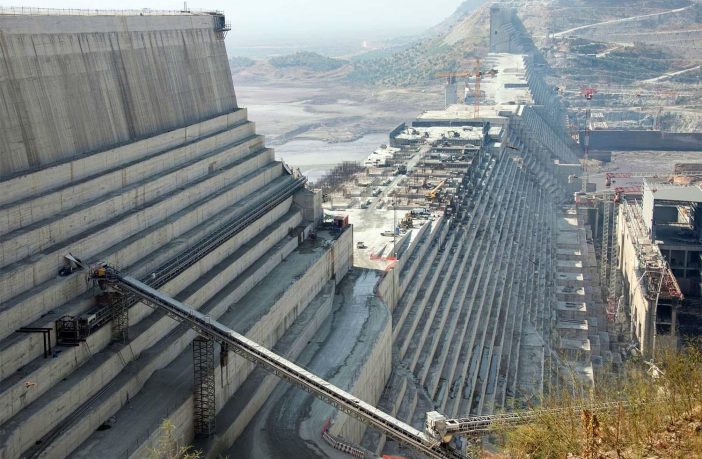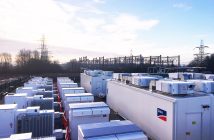Opinion
Over the past decade, observers have watched with trepidation as tensions increased between Egypt and Ethiopia over the construction of the Great Ethiopian Renaissance Dam on the Blue Nile River.
Egyptian politicians have publicly threatened war to defend what they see as their existential interest – Egypt’s right to use most of the Nile’s water. Over 80% of the water that reaches Egypt comes from Ethiopia.
It has been suggested that Egypt has been encouraging separatist movements in Ethiopia to weaken Ethiopia’s government and discourage the project.
Egypt has long defended its right, under colonial era agreements, to stop nine of the upstream countries (including Kenya, Uganda and Ethiopia) from using Nile water. It has a separate agreement with Sudan.
So the Great Ethiopian Renaissance Dam is important because it could set a precedent for other countries to ignore Egypt’s claims and start using Nile water for their own development.
In June, the Ethiopians announced that, after heavy rains, the dam had started to fill the reservoir.
Related: Tensions rise as GERD in filled
There has never been a war over water, though plans for a massive dam on the Nile were at the centre of one of the most dramatic incidents in the Cold War. The 1956 Suez Crisis was triggered by Egyptian president Gamal Abdel Nasser nationalising the canal. One of the reasons he cited was that Egypt needed to raise funds to build the Aswan Dam. Israel, joined by French and British forces, attempted a military intervention, but were forced to withdraw in late 1956 and early 1957.
It’s useful to look back at this history for some context to the current tensions.
The Aswan High Dam
For many decades, Egyptians had sought ways to reduce their dependence on a river whose flow was dangerously erratic. There were years of destructive floods and years too dry to sustain the millions of rural Egyptians’ livelihoods.
The Aswan High Dam provided a way out of this cycle of disaster. The vision was of a dam that would store enough water to see Egypt through the worst drought in a century, and smooth the river’s flow.
The challenge was to turn that vision into reality.
Nasser negotiated with the US and European countries to finance the dam, but the project became embroiled in global politics. When the time came to put the money on the table, the US withdrew its support. It also ensured that the World Bank did the same. Britain was focusing on other colonial ambitions.
So Egypt turned instead to the Soviet Union for support and by doing so was seen to have joined the socialist camp in the Cold War.
In 1956 Nasser nationalised the Suez Canal, saying it was necessary to pay for the Aswan Dam.
British and French troops invaded the canal area in an attempt to reassert control over this vital link between Britain and many of its colonies. But when the US refused to support them, they were obliged to hand over control to the first ever United Nations peacekeeping force. The canal was left in Egypt’s hands, albeit under United Nations supervision.
With the monies from the canal now flowing to Egypt instead of to its original European owners, the Soviets felt able to give Egypt the loans it sought. They provided much of the funding for the Aswan Dam, although a great deal of the design and construction work was done by Egyptians themselves.
While some Western commentators described the project as a disaster, the results were impressive. The dam allowed Egypt to expand the area under irrigation by a third. Egyptian farmers could plant two crops a year. By 1970 when the dam was completed, the 2,100MW of power it generated supplied more than half of Egypt’s electricity needs.
Aside from the substantial economic benefits, the dam’s success established leadership roles in the Middle East for both Nasser and Egypt during a tumultuous period in the region’s history.
This history makes Egypt’s complaints about the Grand Ethiopian Renaissance Dam look a little hypocritical. Ethiopia is emulating what Egypt did 60 years ago to boost its national development.
The current crisis
Egypt’s most recent complaint is that, by filling the Great Ethiopian Renaissance Dam too fast, Ethiopia will deprive Egypt of essential water. Currently, Ethiopia proposes to fill the dam in four to seven years. But Egypt filled the Aswan High Dam, which stores three times as much water as the Grand Ethiopian Renaissance Dam, in just 12 years.
And Ethiopia’s dam could actually help Egypt save water. The guaranteed flow will allow Egypt to keep the Aswan Dam’s levels lower. This will reduce evaporation, through which the dam loses around 10% of the river’s water.
Now that the filling of the Grand Ethiopian Renaissance Dam has begun, Egypt will have to recognise the right of the upstream countries to use some of the water that flows from their lands.
But unfortunately, Egypt’s official position has encouraged a bellicose populist nationalism that will be hard to calm. And the military rulers will have to explain why they failed to stop what they had said was a threat to the nation’s very survival.
When Nasser took control of the Suez Canal he blocked Israeli ships from using it. That action, rather than the construction of the High Dam, is what led to the 1967 and 1973 wars with Israel and to continued regional conflicts.
If history repeats itself, it is likely that attention will shift from the Grand Ethiopian Renaissance Dam to other political problems that Egypt faces.
Meanwhile Sudan, placed between the new Ethiopian dam and Egypt, will benefit from expanded irrigation and some of the dam’s cheap electricity. Ethiopia will develop more of its water resources for agriculture. The dam’s electricity will power the Addis Ababa metro and the industry it hopes to attract.
So water and the Renaissance Dam, rather than becoming a cause for war, may yet be a source of peace and progress, as the Aswan High Dam has proved to be.![]()
Author: Mike Muller, Visiting Adjunct Professor, University of the Witwatersrand
This article is republished from The Conversation under a Creative Commons license. Read the original article.












3 Comments
It’s ironical the pharaoh people things they own river while it’s source is in other countries if I was the president of my country I would ignore the noise &develop my country using the water & if they continue to make noise prepare a bill since our independence to date for Egypt to pay for water they’ve used yet they don’t conserve the source
This is a very good move about development of the dam
Ethiopia should ignore what Egypt is imposing. We are also planning such massive projects here in Uganda. There is no more discussions about colonial agreements. Let us unite as Africa and develop Africa together.
I agree with what Ethiopia is doing. Keep up the spirit.
Egyptians are human beings. Just like the rest, they need water to sustain their livelihood. But to base that right on some pre colonial documents signed by our opressers before independent, is an insult to the rest of africa. To abstain from using our natural resources for the sake of Egypt prosperity is most absurd. If it has not sank into Egypt’s head that all agreements made with british expired immediately we attained our independence then, I don’t know what Egypt can understand. I urge Egypt to change its approach towards this matter and use concilatory tone or go to hell. We will use our natural resources, our water in any way we deam fit. Egypt war threats will forever remain just that, threats. Join the table and humble yourself with knowledge that down stream countries are independent and deserve respect, only then will you achieve your objectives. Your 80 percent demand is only recognised by you. Play your slavery ideology on africans and more dams will follow, from Kenya uganda Sudan and any other country that touches that body of water. Now you can send your jets to Ethiopia and see what happens.